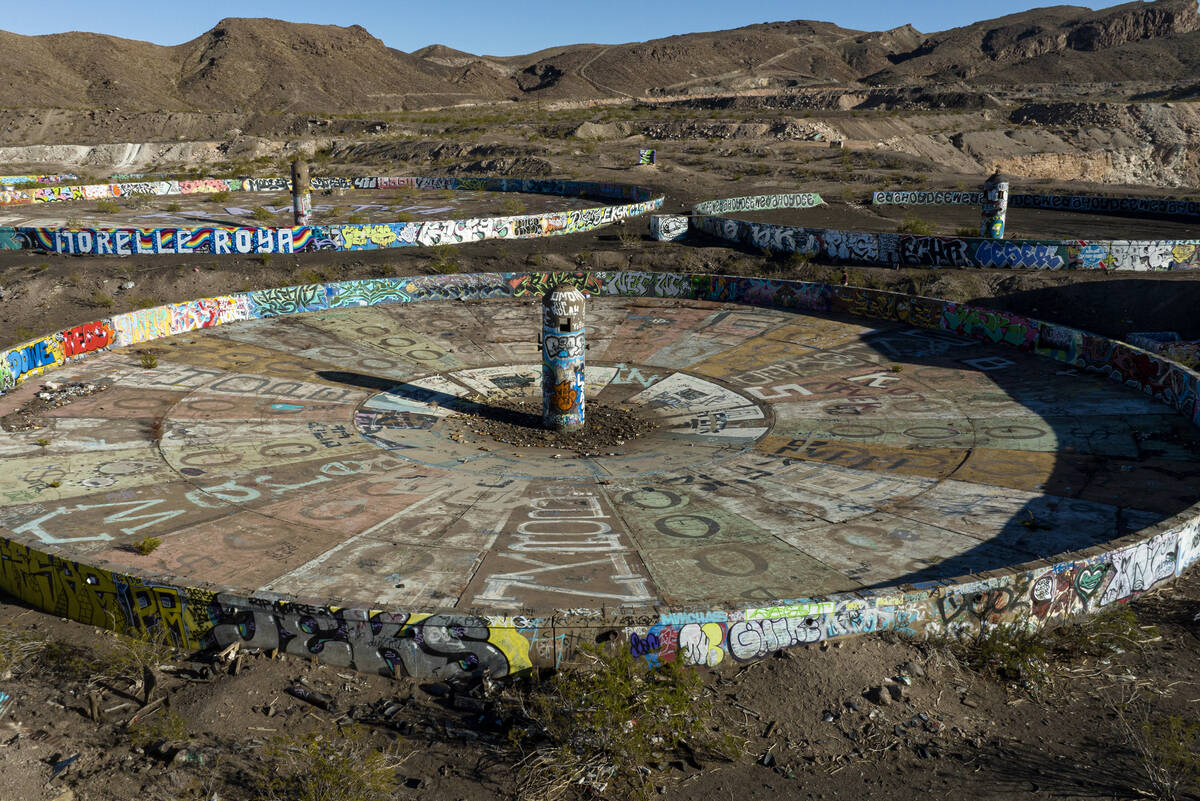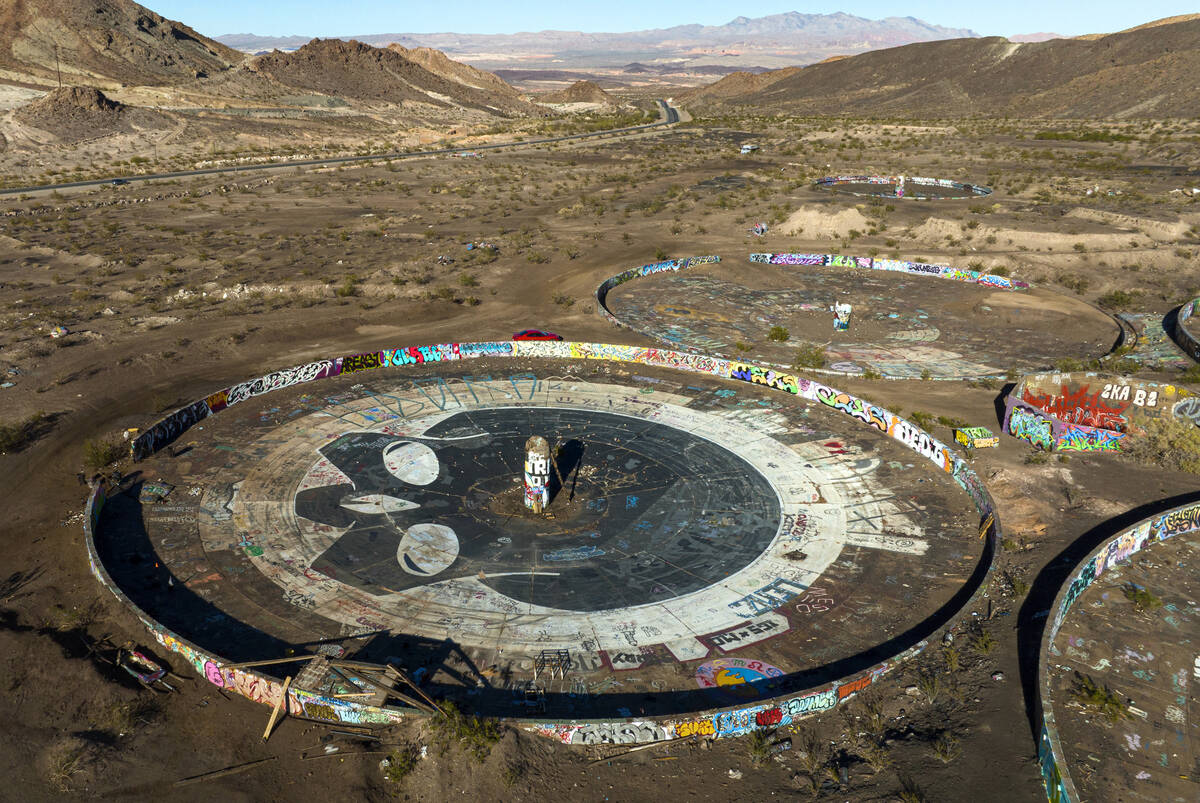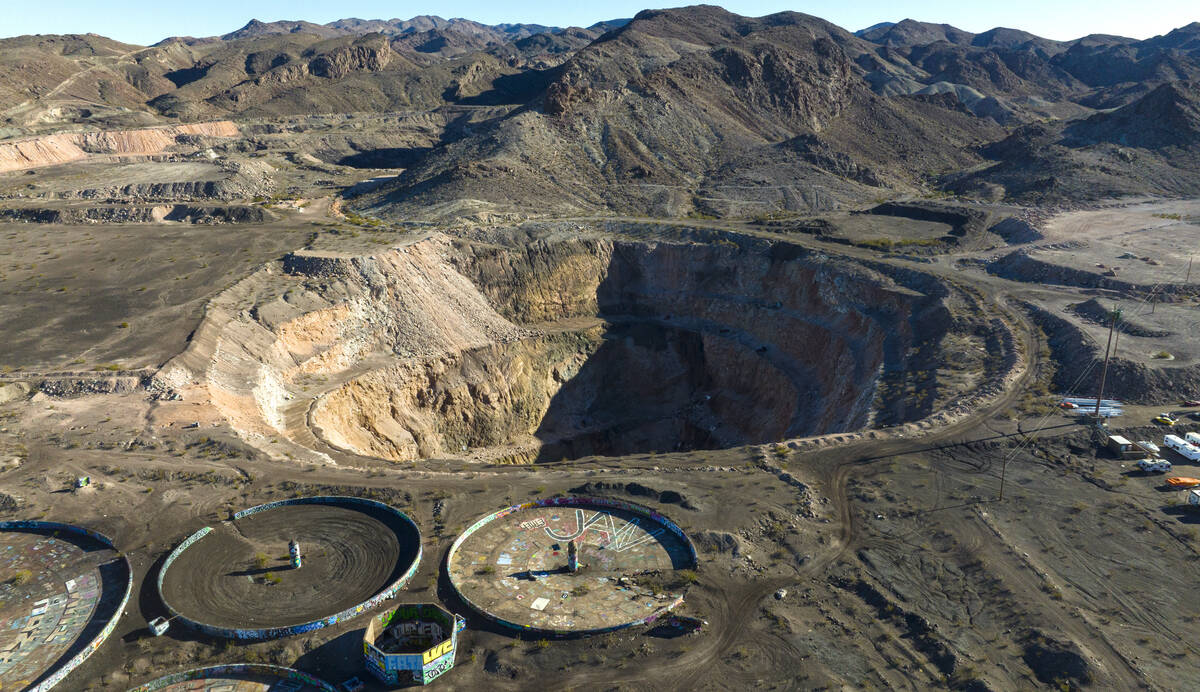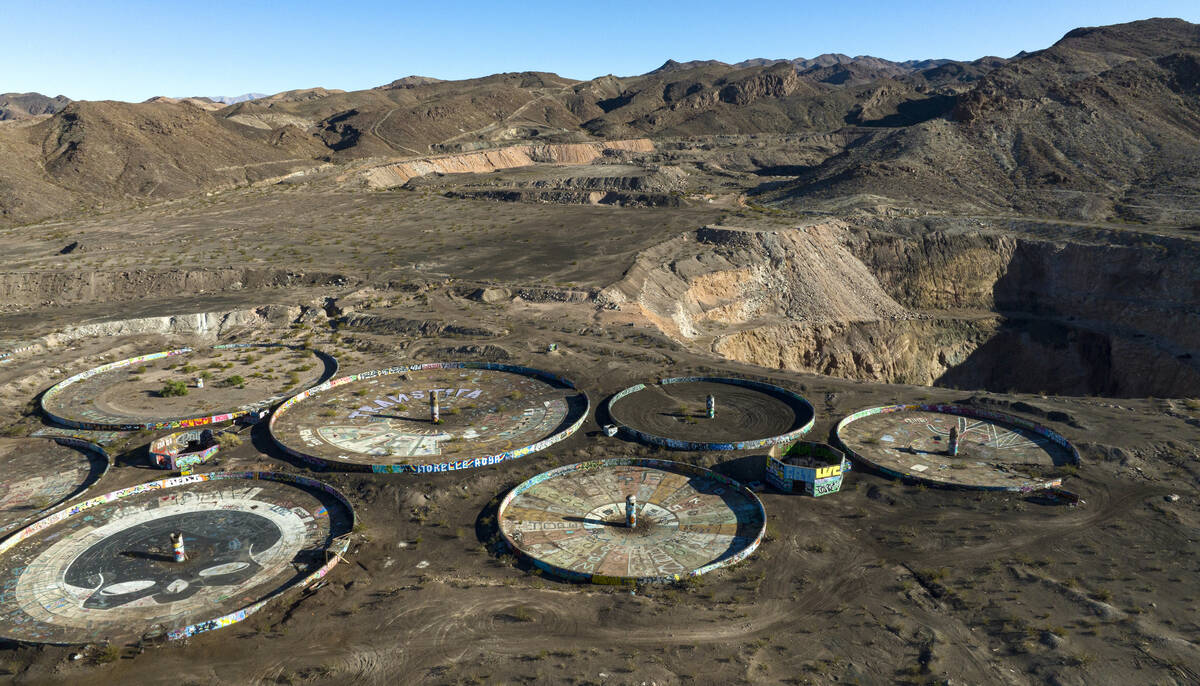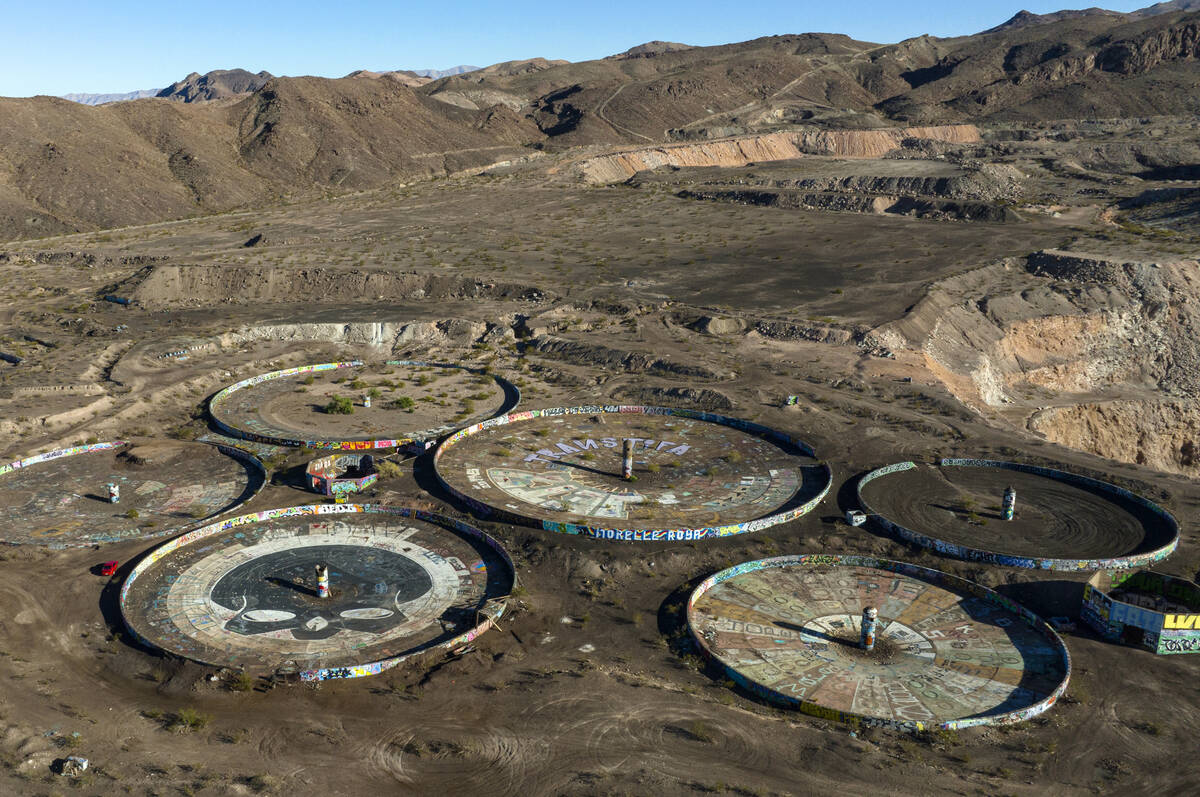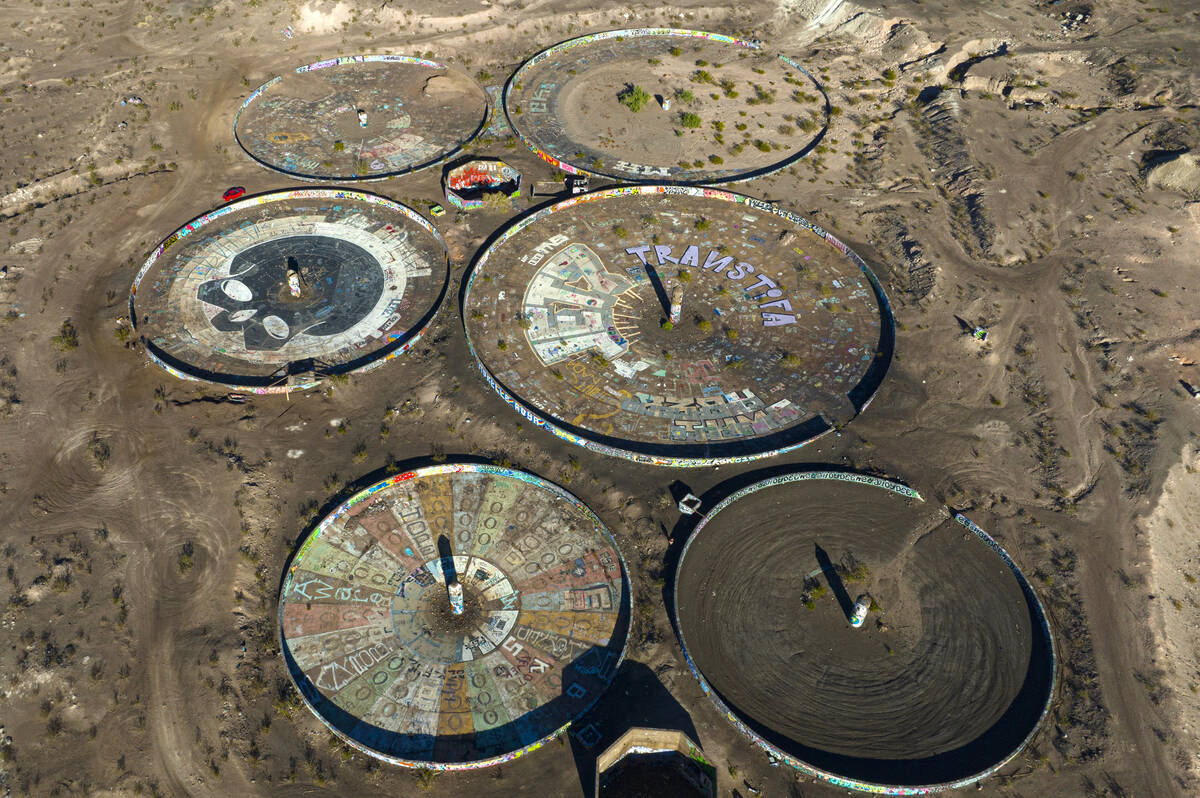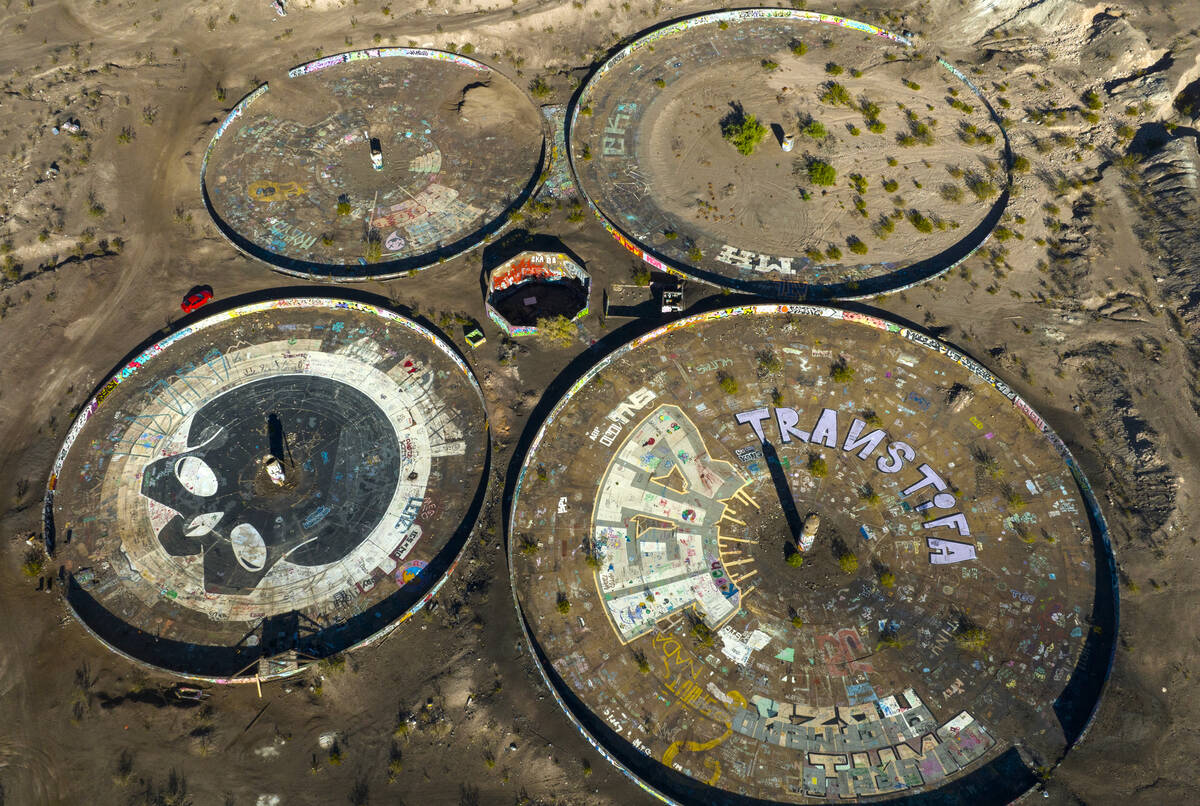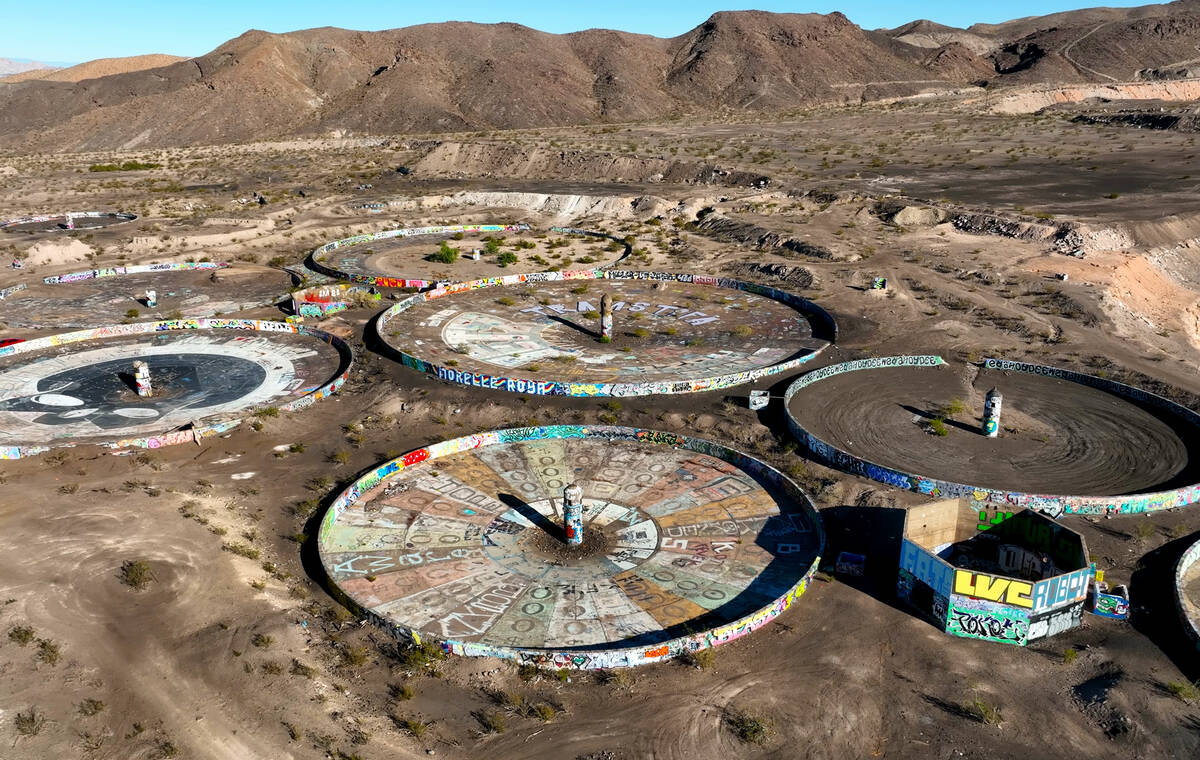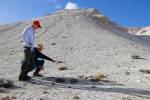Henderson City Council to vote on controversial development at old mine site
After delaying the vote last month, Henderson’s City Council is expected to vote Tuesday on a controversial development on top of a 100-year-old mine near Lake Las Vegas.
A handful of items on the upcoming council agenda are connected with a proposed 3,000-home development to be built over the site of the Three Kids Mine, an open-pit mine that was used to supply manganese for weapons in World War I.
The site still holds manganese and other metals like arsenic, cadmium, lead and hexavalent chromium, according to the Nevada Department of Environmental Protection. It also has asbestos, among other nonmetal materials.
The cleanup will remove asbestos from the site, then bury the other materials in the mine’s pits and cover the whole site with clean soil.
Multiple experts voiced concerns last month about the hazardous materials in the mine becoming a problem in the future.
Doug Sims, the College of Southern Nevada’s dean of science, engineering and mathematics, said the arsenic tailings in the mine may be broken down by local bacteria after the tailings are buried and oxygen eventually leaves the environment, which would result in dangerous arsine gas. Sims and UNLV Professor Vernon Hodge said the project also may spread hazardous metals to the surrounding area.
Both Sims and Hodge called for more research into the mine and the effects of burying the materials.
Kirk Stowers, a geologist for Broadbent and Associates Inc. which is handling cleanup of the site, said the experts’ concerns are understandable but can be put to rest because of the amount of research that Broadbent has done on the site.
Broadbent will prevent the wind from blowing contaminants off of the site by both wetting down any soil or tailings as they move them and by monitoring air quality throughout the cleanup, according to Stowers.
Stowers said Sims’ concern about microbes breaking down arsenic into arsine gas is “fantastically unlikely” because the soil is not acidic enough to support the bacteria, and oxides in the soil would prevent an anaerobic environment from forming.
“I struggle as a scientist to say impossible, but it is fantastically unlikely that that chemical reaction will take place,” Stowers said.
16 years in the making
The project started in 2007 when Lakemoor Ventures LLC, then known as Lakemoor Canyon LLC, approached the Henderson Redevelopment Agency with intentions to handle the cleanup and remediation of Three Kids Mine.
Over the course of the next several years, the developers partnered with the city of Henderson, the state and the federal government to pass multiple pieces of legislation to clear the way for the plan to go into motion.
Lakemoor contracted with Broadbent and Associates to handle the site cleanup and remediation in partnership with the Nevada Department of Environmental Protection, and Pulte Homes of Nevada will work with Lakemoor on the development of the master-planned community.
Mindy Unger-Wadkins, the project manager at Lakemoor, said a percentage of property taxes in the new development will go back to the redevelopment agency and developers to pay for the site cleanup. City documents on the item said a percentage of taxes collected on the development will go directly toward the developer’s expenses for the first 25 years after the project, and Lakemoor is set to receive up to $550,000,000 in reimbursements in the deal.
Frederick Kirschner, a hydrogeologist who has experience working with abandoned mines, explained that the federal government usually cleans up contaminated mine sites like this through the Comprehensive Environmental Response, Compensation and Liability Act.
Through the act, a site is placed on the Environmental Protection Agency’s National Priorities List when it presents a long-term, but not immediately life-threatening, health risk to the public. Then the federal government is responsible for the cleanup of the site and compensation to the community for loss of resources.
Kirschner said the federal government skirts the requirement to reimburse the community by allowing Lakemoor to be responsible for cleaning up the site and allowing it to develop on top of it.
Bob Unger, Unger-Wadkins’ brother who started the project in 2007, said at a public information event in March that the federal government did not have the funds available to clean up the site when he was putting the project together. He said Lakemoor handling the cleanup would get the site remediated faster, while taking the liability for the site off of the federal government.
“The whole concept was the federal government wins because they get out of the liability, the state wins because it was their number one priority cleanup … according to their (Nevada Department of Environmental Protection’s) director at that time, and the city wins because it’s developing,” Unger said at the event.
But Kirschner said putting the liability onto the city poses a risk in the future if the site is still contaminated.
‘I see problems with it’
Stowers said Broadbent’s testing employed multiple Ph.D. researchers and went through several levels of review, including review from the Nevada Department of Environmental Protection.
But Karen Johannesson, professor of geochemistry at the University of Massachusetts Boston, said she is wary about Broadbent’s findings.
“My concern is having a neutral party study it … and not someone that’s being paid by the developer,” Johannesson said. “I mean, they may be right, but it just seems wise to be cautious, at least a second opinion or third opinion.”
Kirschner said he did not trust Broadbent’s risk assessments and evaluations for the site, because he said the company only analyzed a “small handful” of the naturally occurring metals in the mine’s orebody.
“I’ve reviewed this type of work for the last 40 years,” Kirschner said, “and I see problems with it.”
Some locals also have problems with the potential development. Sheryl Pupko said she was worried that the developers and Broadbent had not done enough research into the risks of the development.
“It should not be voted on till after the remediation is complete,” Pupko said. “So then they can do analysis of the soil and the toxins there afterward.”
Lakemoor Ventures gave $1,000 in campaign contributions to Mayor Michelle Romero, Councilman Jim Seebock and Councilwoman Carrie Cox.
The same company running the communications for the project, Trosper Public Relations, also handles public relations for the campaigns of Romero, Seebock, Councilman Dan Shaw and Councilman Dan Stewart.
Contact Mark Credico at mcredico@reviewjournal.com. Follow him on Instagram @writermark2.



